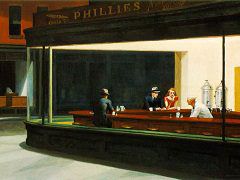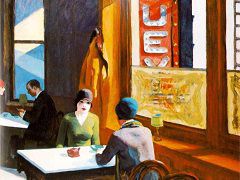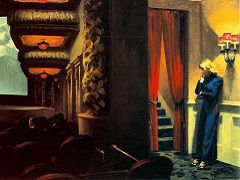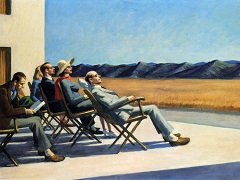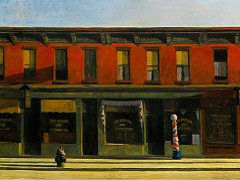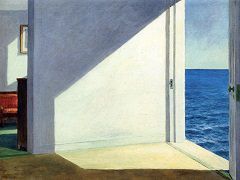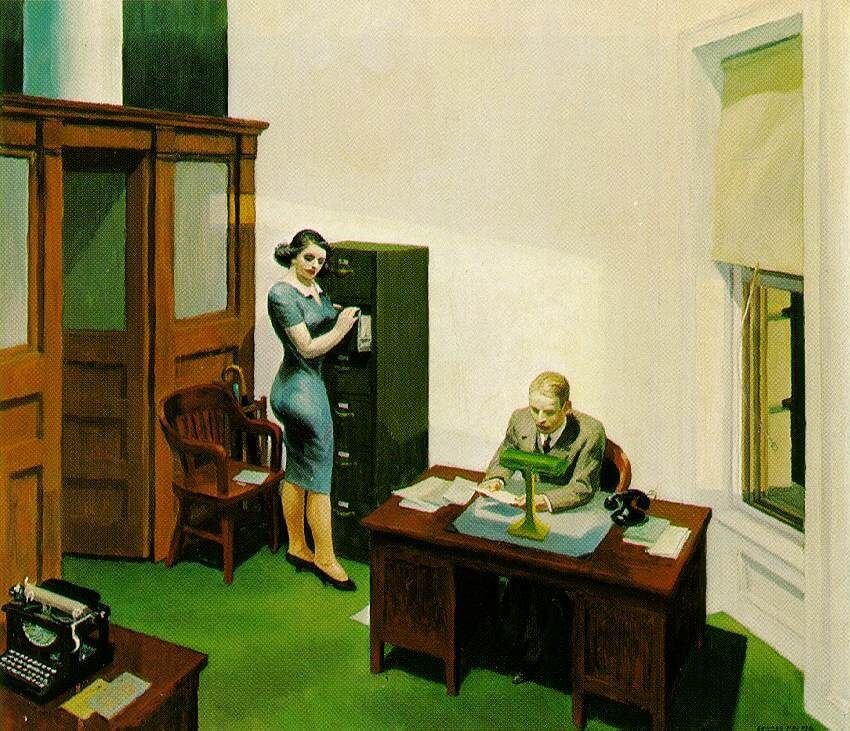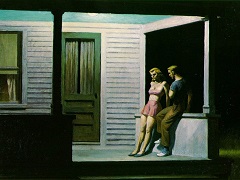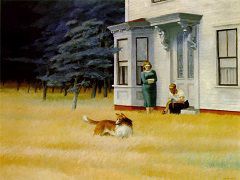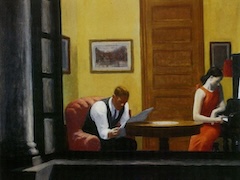Sun in an Empty Room, 1963 by Edward Hopper
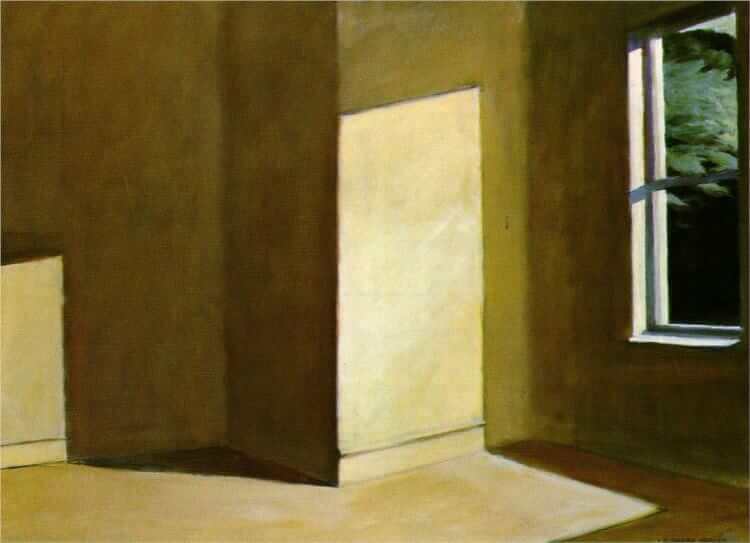
In his later paintings, Edward Hopper sought to express the experience of seeing and perceiving the world by treating light in such a way that it almost becomes a material object. His emphasis on light, the dissolution of material objects, and his ability to visualize an internal reality received its ultimate expression in Sun in an Empty Room, one of his last pictures.
Hopper had the rare gift of being able to perceive reality as a whole in the forms of the outside world, of actually seeing the truth. In his intuitive perception the objects of the world confronted him with a vitality of their own. Thus, it was not only justifiable but also necessary for Hopper to hold to the empirical forms of the world. They were his starting point, his goal, as well as the means of his art, the unique qualities of which will continue to question any form of abstractionism.
In his mature works, Hopper moved from a relatively objective, almost impersonal way of viewing the world, to a very emotional one. This emotionalism did not manifest itself in his brushwork as it did, for example, in Van Gogh. Hopper's application of paint in his mature works became at times almost ascetic in its thinness, while his drawing of forms was sharp and controlled.

